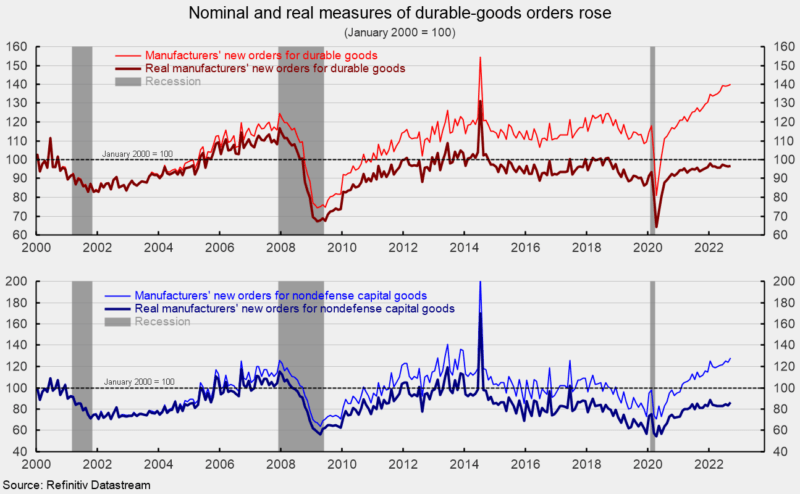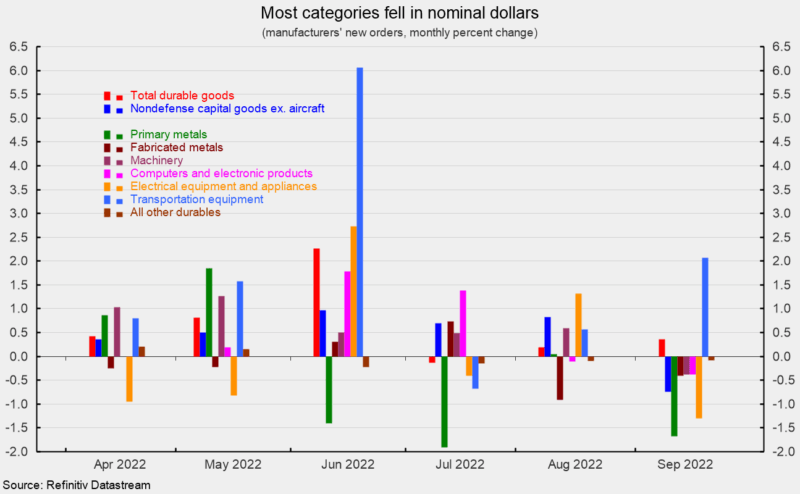Durable-Goods Orders Rose in September, Boosted by Transportation Equipment
New orders for durable goods rose 0.4 percent in September, following a 0.2 percent gain in August. Total durable-goods orders are up 11.3 percent from a year ago. The September increase puts the level of total durable-goods orders at $274.7 billion, the second highest on record (see top of first chart).
New orders for nondefense capital goods excluding aircraft, or core capital goods, a proxy for business equipment investment, fell 0.7 percent in September after increasing 0.8 percent in August and 0.7 percent in July. Orders are up 9.8 percent from a year ago, with the level at $74.8 billion, the second-highest on record.
However, rapid price increases have had an impact on capital goods orders. In real terms, after adjusting for inflation, real new orders for durable goods increased 0.2 percent in September following a 0.2 percent decline in August. Real new orders for nondefense capital goods – one of AIERs leading indicators – gained 3.3 percent after a 1.5 percent fall in August (see bottom of first chart). Real new orders for capital goods are up 6.7 percent from a year ago but remain below the January 2022 level.
Just one of the seven major categories shown in the durable-goods report posted a gain in September in nominal terms. Transportation equipment jumped 2.1 percent, its second consecutive gain (see second chart). Within the transportation equipment category, nondefense aircraft jumped 21.9 percent following an 8.6 percent fall in August, defense aircraft sank 32.2 percent following a 26.1 percent rise, and motor vehicles and parts were up 2.2 percent.
Among the other individual categories, primary metals orders fell 1.7 percent, electrical equipment and appliances had a 1.3 percent decrease, computers and electronic products, machinery orders, and fabricated metals orders all fell by 0.4 percent, and the all other durables category dropped 0.1 percent.
Durable-goods orders have posted a strong recovery from the lockdown recession measured in nominal-dollars. However, after adjusting for price increases, real orders for durable goods are rising at a very slow trend growth rate.







